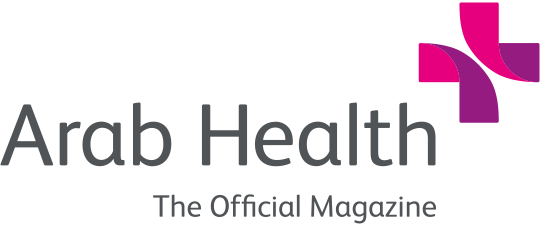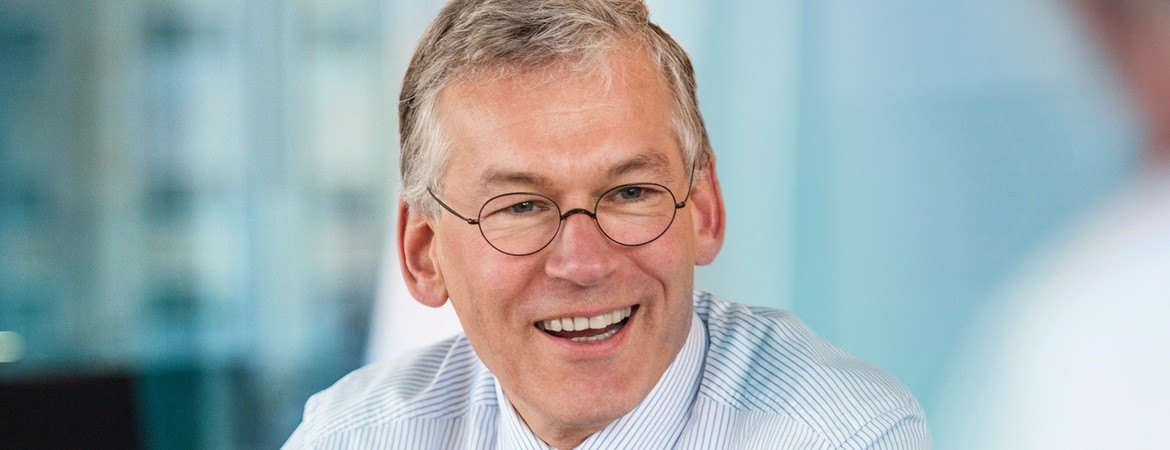Patient First - How Philips’ Past Is Guiding Its Healthcare Roadmap
Nicolas White, Informa Life Sciences Exhibitions, Dubai, UAE , 16 March 2017
Long a well known consumer brand, Philips has, explains Frans van Houten, the company’s CEO, “transformed into a healthcare technology company.”The company has been in the medical device business for a good while, producing a range of imaging products used in hospitals across the globe. Having run Philips’consumer electronics business groups before a stint away from the company, Van Houten brings something of a consumer focus to healthcare. This is clear from looking around Philips’booth at Arab Health. Flanked by other industry giants, it stands out due to its product mix. In addition to MRIs, CT scanners and other healthcare mainstays, the company also featured a raft of products that wouldn’t look out of place at a consumer show, virtual reality headsets and products that ‘gamify’ patient health were prominent.
This drawing on the company’s consumer heritage is explained by the company’s mission to “transform the lives of three billion people.”Van Houten highlights the health challenges faced across the globe, but perhaps especially in the middle east, citing high rates of obesity, diabetes and heart disease stressing that Philips approaches the region with “an approach to bring solutions.”They cover “the entire health continuum…helping decision makers how to prevent health issues, how to diagnose them right the first time, how to treat them minimally invasively and how to approach them to help promote a healthier lifestyle.”This integrated, patient centric approach, continues Van Houten is supported by technology and software solutions “all along the way”- something the company believes is the “best way to approach patient health management.”
He highlights the work the company is doing in the UAE to support the broad goal of improving population health and enhancing preventative care. Philips has, he says, conducted a survey on the population’s health and are developing a solution “to deliver immediate cardiovascular intervention somebody in the street for example would have a cardiac infarction.”This solution, is being developed in partnership with the Dubai government in line with its goal of becoming “the heart health city.”It’s a public-private partnership that aims to ensure that anybody that has a cardiac infarction receives help within “seconds, wherever they are in the city.”
The problem, says Van Houten, is that when somebody suffers a heart attack “in the middle of the street,”people are not usually aware of where the nearest caregiver that can help is or where the nearest AED is. “By putting all that information in the cloud”through crowdsourcing, he explains, “you can determine like a GPS who in the area can support that patient.”Similar to a recent case where a Dubai policeman happened to see someone suffer a heart attack while watching a CCTV camera and direct emergency services as quickly as possible, saving the patients life, the proposed system intends to establish clear channels of communication and, crucially, a network of resources from defibrillator locations to a live map of qualified caregivers to try to ensure that heart attack deaths can be prevented. It is, says Van Houten, a “collaboration between Philips and emergency response agencies i the emirates to bring information together at the moment it is needed.”
It is, he continues, an example of “bringing the physical world and the data world together. You need both”he stresses as a heart attack cannot be treated with data alone. Human intervention is still required so it becomes an “integration of the cloud, technology and people.”
It is the kind of system that could perhaps only be conceived of by a company with a rich history of consumer devices and services. Indeed, Van Houten is of the strong belief that the worlds of professional and consumer health devices need to come together because “after all, every patient is a person. If we only design healthcare around acute and episodic care, in the end you do not get to a healthy population. If you wait until theres an incident you get expensive interventions to fix that person. To truly bring the health of the population to a higher level, you need to engage with the people and help coach them towards a healthier lifestyle.”
If, says Van Houten, that support for patients can be done well and within people’s homes, the pressure on health systems and hospitals could be drastically reduced. Indeed, inline with this vision, Van Houten is keen to point out that, “increasingly all our products are connected to our ‘health suite cloud’“a platform for the internet of things in healthcare. Connected devices can provide patient data over the internet, allowing care teams to provide feedback to the patient and intervene if treatment is failing or if the patient is not adhering to their course of treatment. Indeed, some products can not only monitor if they're being used but the quality of that use. As such, providers can build much more detailed pictures of patient adherence which could lead to interesting new ways to incentives patients. One such idea would be to link insurance reimbursement to a patient’s level of adherence to treatment. Something of a carrot and stick situation.
Philips’legacy in consumer devices has clearly informed their healthcare product roadmap, leading to an array of products aimed at supporting patients first and foremost. This focus has led to the company adopting an extremely positive outlook both worldwide and in the middle east. Indeed, the company’s growth i the region outpaced its global average. Looking ahead to incorporating more consumer technologies such as augmented reality and gamification, Van Houten is supremely confident, saying that the company believes that “applying the technologies from the game world are great in healthcare. The sky is the limit , we’re pushing it immensely.”


